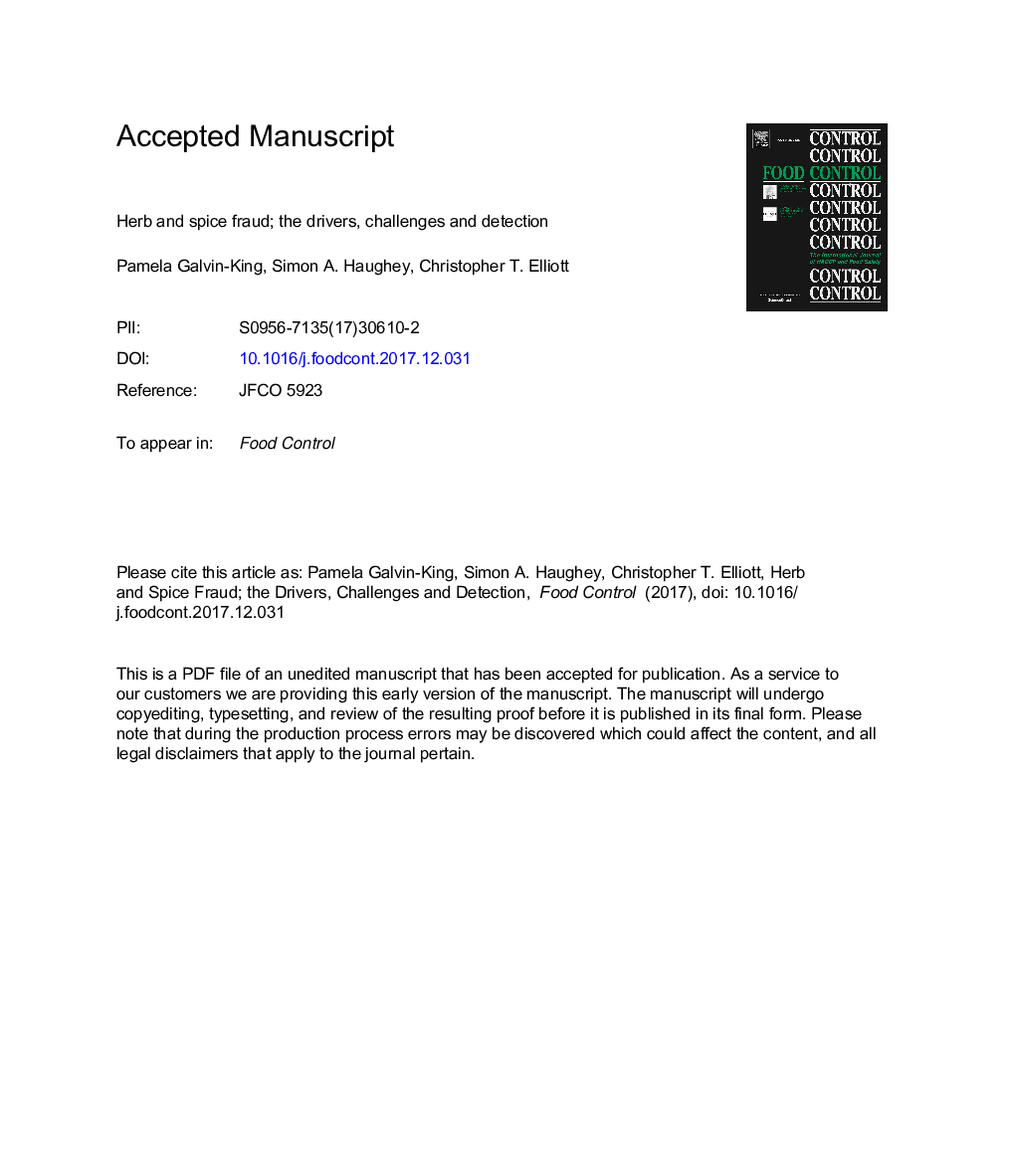| کد مقاله | کد نشریه | سال انتشار | مقاله انگلیسی | نسخه تمام متن |
|---|---|---|---|---|
| 8888029 | 1628376 | 2018 | 38 صفحه PDF | دانلود رایگان |
عنوان انگلیسی مقاله ISI
Herb and spice fraud; the drivers, challenges and detection
ترجمه فارسی عنوان
تقلب گیاهی و ادویه؛ رانندگان، چالش ها و
دانلود مقاله + سفارش ترجمه
دانلود مقاله ISI انگلیسی
رایگان برای ایرانیان
کلمات کلیدی
گیاه دارویی، ادویه، محکومیت اقتصادی انگیزه، خطرات بهداشتی، اثر اقتصادی، روش های تشخیص تقلب،
موضوعات مرتبط
علوم زیستی و بیوفناوری
علوم کشاورزی و بیولوژیک
دانش تغذیه
چکیده انگلیسی
The global herb and spice industry, valued at approximately US$4 billion, continues to grow. This industry is continuously under threat from criminals dealing in economically motivated adulteration. Opportunities for criminals to adulterate herbs and spices can occur at any point along the long and complex supply chains. This review looks at the cases and effects of adulteration in the herb and spice industry, and analytical methods being used to detect it and ultimately prevent it. The economy and consumer confidence can be negatively affected following a food fraud scandal. Fraud may also pose a health risk to consumers, even though it is economically motivated, such as the case with nut protein in cumin and paprika. Therefore, for these reasons, rapid screening techniques are required to detect and help prevent fraud from occurring in the industry. Advances in technology has resulted in an increase in the use of spectroscopic techniques being used alongside chemometrics for the detection of adulteration in the herb and spice industry. Also, improvements in DNA analysis and mass spectrometry are providing faster and cheaper methods of adulteration detection. These advancing techniques aim to protect the herb and spice industry and its consumers from fraud by detecting, deterring and therefore preventing adulteration.
ناشر
Database: Elsevier - ScienceDirect (ساینس دایرکت)
Journal: Food Control - Volume 88, June 2018, Pages 85-97
Journal: Food Control - Volume 88, June 2018, Pages 85-97
نویسندگان
Pamela Galvin-King, Simon A. Haughey, Christopher T. Elliott,
